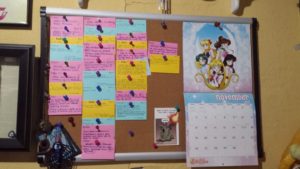A lot of the indie authors I know distribute online and only online. And why shouldn’t they? It’s easy, it’s cheap, and that’s where a large percentage of the market is. However, that still leaves the rest of the book-buying market. Where are they purchasing? Well, most of that remaining section of the market shops at brick and mortar stores and while this seems like it’s an insignificant portion of the market, when done right, it can become your largest market. However, it can be difficult to get into the brick-and-morter market. Chains like Barnes and Noble or Powell’s can be tricky to get into. B&N requires indies to jump through a lot of hoops and at Powell’s you pretty much have to know someone on the inside to get them to stock an indie title. But indie bookstores are usually a lot more approachable and using them to reach more readers can get you access to almost all of the book buying market.
Before I go into the how, I want to apologize because this is a topic I could write pages and pages about so it’s going to be more of an overview because I don’t have the space on this forum to really go in depth. Hopefully in the future I can talk more about the specifics. It’s also going to focus on the small, single location indie bookstores since the big chains can be problematic. I also want to acknowledge that not every indie author will see this route as a good option for them. It is more work — and it is work that takes you away from creating the next masterpiece — and there are a few hoops to jump through. If you’re making a considerable amount from online sales the extra work may not be worth it to you. For me, it has been worth it. For every book (both digital and print) I sell online, I sell three print copies in indie bookstores. Seriously. My sales ratio really is 3:1. Now granted, I’ve been working at an indie bookstore for twenty years so I do have an advantage in getting my books on local store shelves but it’s not hard for everyone else to do it too.
The first, and probably most important, is to have a relationship with the store’s staff. If you shop there, and the staff know your face, they will be more willing to take on your book — even if it’s a genre that they normally don’t sell. It’s easier to justify taking a risk on a book from someone you know, than a complete stranger. If there isn’t an indie store near you, I do realize that this may not be possible. But if there is, it’s worth the time investment to go every once and a while to browse and develop that relationship.
The second is to know your book’s primary genre and gear your pitch and promotional materials (sell sheet, bookmarks, etc.) toward that. Say that your book is historical fiction with a touch of fantasy and mystery and your back copy emphasizes all genre elements of all three. That makes it impossible for staff to know where to shelve it or what kind of readers to suggest it to, which makes it nearly impossible to sell. If you focus on the single most prevalent genre for your back copy, branding, and promotional materials it’s going to make it a lot more appealing to the store and a lot easier to sell. Another thing to be aware of and use to your advantage is popular authors who have similar title and your alsobots. One of the indie titles my store carries is a historical novel in the same vein of Jane Kirkpatrick — one of our top selling authors. I put a note on the cover encouraging Jane Kirkpatrick fans to check out this indie title and it’s been flying off the shelf ever since.
When you’re ready to ask them about carrying your book there’s a lot of information you need them to give you. Do they buy the book directly from you or consign? A lot of stores won’t order from Createspace and Ingram isn’t very good about accurately displaying information for Sparks titles so don’t be surprised if they want you to be the distributor. You also need to know for what length of time they’ll carry it. If they consign, what is the payment percentage? Do they pay 40% of the list price? 50%? More? When do they pay you for sold copies? Will they contact you if they restock and when will that happen? When the last copy sells or at the end of the consignment period? Will they let you reclaim unsold stock? Do they require you to pay a consignment/stocking fee? Who is the main contact person? Do they do in-store book signings and/or readings? All of these things are going to vary from store to store so if they have a print out of their policy be sure to get one for your records so you can keep track.
Be sure to promote on your website and social media that the store is carrying your book. If you’re doing a signing/reading, promote that too. Don’t do it just once either. Post reminders during the holidays that your book makes a great gift and they can buy it online AND at the local bookstore. Let it gradually sink into the public’s mind that they don’t have to wait a day or five for the Amazon Fairy to deliver a print copy. They can buy it at the local store and read it now!
Once all of that is done you can usually kick back, relax, and resume writing the next tome. Some stores might require a little more follow through and some periodical check ins but the hard, laborious, slightly scary part is over. Even if indie stores turn out to be only a small portion of your overall sales, it never hurts to have your books in another part of the market. The more people you reach, the more you can sell.


